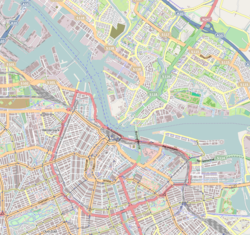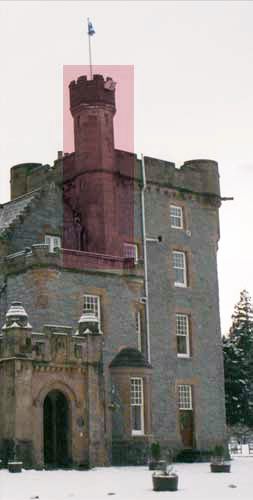
In architecture, a turret is a small tower that projects vertically from the wall of a building such as a medieval castle.
The year 1921 in architecture involved some significant architectural events and new buildings.
The year 1917 in architecture involved some significant architectural events and new buildings.
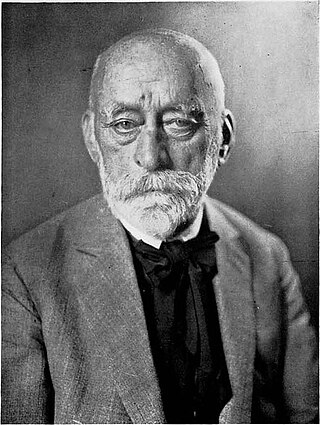
Hendrik Petrus Berlage was a Dutch architect and designer. He is considered one of the fathers of the architecture of the Amsterdam School.

The Beurs van Berlage is a building on the Damrak, in the centre of Amsterdam. It was designed as a commodity exchange by architect Hendrik Petrus Berlage and constructed between 1896 and 1903. It influenced many modernist architects, in particular functionalists and the Amsterdam School. It is now used as a venue for concerts, exhibitions and conferences.

The Amsterdam School is a style of architecture that arose from 1910 through about 1930 in the Netherlands. The Amsterdam School movement is part of international Expressionist architecture, sometimes linked to German Brick Expressionism.
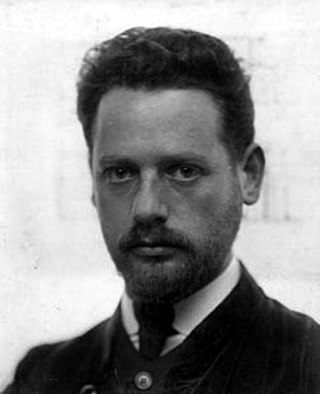
Michel de Klerk was a Dutch architect. Born to a Jewish family, he was one of the founding architects of the movement Amsterdam School

Pieter Lodewijk (Piet) Kramer was a Dutch architect, one of the most important architects of the Amsterdam School.

Eduard Cuypers was a Dutch architect. He worked in Amsterdam and the Dutch East Indies.

Dutch architecture has played an important role in the international discourse on architecture in three eras. The first of these was during the 17th century, when the Dutch empire was at the height of its power. The second was in the first half of the 20th century, during development of modernism. The third is not concluded and involves many contemporary Dutch architects who are achieving global prestige.

The term Brick Expressionism describes a specific variant of Expressionist architecture that uses bricks, tiles or clinker bricks as the main visible building material. Buildings in the style were erected mostly in the 1920s, primarily in Germany and the Netherlands, where the style was created.
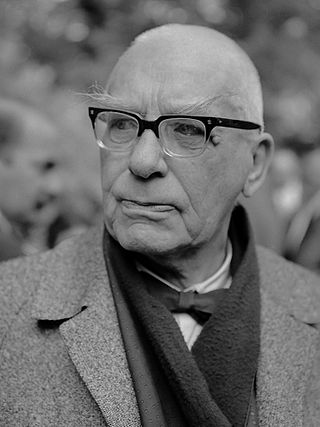
Hildebrand Lucien (Hildo) Krop was a prolific Dutch sculptor and furniture designer, widely known as the city sculptor of Amsterdam, where his work is well represented.
The Dutch city of Amsterdam has had many planned expansions over the past two centuries.
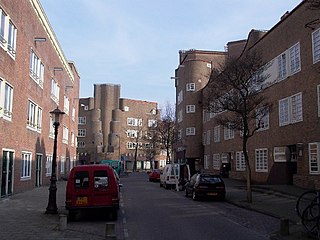
Nieuwe Pijp is a neighbourhood in Amsterdam, Netherlands. It is part of the borough of Amsterdam-Zuid. The Nieuwe Pijp is bordered by Ceintuurbaan and Sarphatipark in the north, Van Woustraat in the east, Amstel Canal in the south and Boerenwetering canal in the west. Along with the Oude Pijp, situated north of the Nieuwe Pijp, it is often simply referred to as De Pijp.

Rivierenbuurt is a neighbourhood of Amsterdam, Netherlands. The neighbourhood is situated in the eastern part of the borough of Amsterdam-Zuid, bordered by the river Amstel to the east, the Boerenwetering canal in the west, the Amstelkanaal in the north and the A10 motorway in the south. In 2013, the Rivierenbuurt had approximately 28,400 residents.

The Plan Zuid is an urban development plan of Amsterdam South in the city of Amsterdam, Netherlands, designed by architect Hendrik Petrus Berlage. Berlage was responsible for the urban concept (1915) and the architects of the Amsterdam School designed the implementation of the plan.
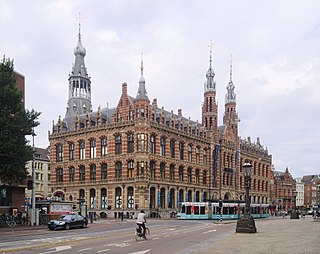
The former Amsterdam Main Post Office, now the Magna Plaza shopping centre, is a monumental building located at Nieuwezijds Voorburgwal 182 in Amsterdam, Netherlands. It was built in 1895–1899 in neo-Gothic and neo-Renaissance style. The building has been a rijksmonument since 9 July 1974, and is part of the Top 100 Dutch heritage sites.

Karel Petrus Cornelis de Bazel was a modern Dutch architect, engraver, draftsman, furniture designer, carpet designer, glass artist and bookbinding designer. He was the teacher of Adriaan Frederik van der Weij and the first chairman of the Bond van Nederlandse Architecten, beginning in 1909.

Jan Frederik ("Frits") Staal, was a Dutch architect, and a major figure in the development of modern architecture in the Netherlands in the first half of the twentieth century. He was the father of the architects Arthur and Georges Staal and the linguist and South Asia scholar Jan Frederik Staal.

The former Utrecht Post Office building is situated on Neude square, Utrecht, the Netherlands. Since 2020 it has served as the headquarters of the Utrecht Public Library.

